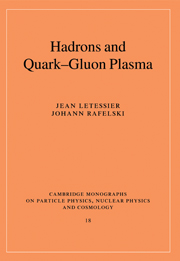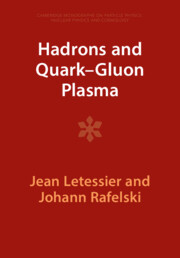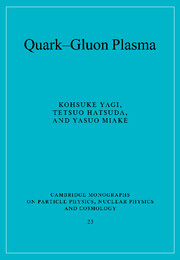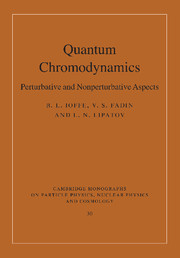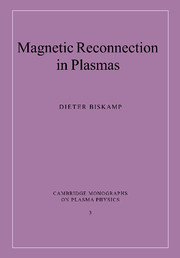Hadrons and Quark–Gluon Plasma
Before matter as we know it emerged, the universe was filled with the primordial state of hadronic matter called quark–gluon plasma. This hot soup of quarks and gluons is effectively an inescapable consequence of our current knowledge about the fundamental hadronic interactions: quantum chromodynamics. This book covers the ongoing search to verify the prediction experimentally and discusses the physical properties of this novel form of matter. It begins with an overview of the subject, followed by discussion of experimental methods and results. The second half of the book covers hadronic matter in confined and deconfined form, and strangeness as a signature of the quark–gluon phase. Covering the basics as well as more advanced material, it is ideal as an introduction for graduate students, as well as providing a valuable reference for researchers already working in this and related fields.
- Provides an accessible introduction to the rapidly expanding field of hadronic interactions and quark–gluon plasma
- Addresses the strangeness signature of quark gluon plasma
- Suitable as an introduction for both graduate students and researchers
Reviews & endorsements
'Letessier and Rafelski's book occupied a sparsely-populated niche. it contains a valuable toolkit for understanding the physics of heavy-ion collisions, and the properties of matter at the crucial temperature of around 100 MeV, where quarks are thought to escape their cages … an excellent book.' Mark Hindmarsh, The Observatory
'The book offers a broad overview of the facilities around the world at which the relevant experiments have been carried out or are planned, and of the theoretical concepts and methods through which the results of these experiments can be interpreted. I am fairly sure that this volume will provide experts with a useful and timely summary of the state of their field, while sufficiently assiduous newcomers will find it a tolerably good starting point for further exploration.' Comtemporary Physics
Product details
January 2005Adobe eBook Reader
9780511037276
0 pages
0kg
200 b/w illus. 15 tables
This ISBN is for an eBook version which is distributed on our behalf by a third party.
Table of Contents
- Part I. A New Phase of Matter?:
- 1. Micro-bang: big bang in the laboratory
- 2. Hadrons
- 3. Vacuum as a physical medium
- 4. Statistical properties of hadronic matter
- Part II. Analysis Tools and Experiments:
- 5. Nuclei in collision
- 6. Understanding collision dynamics
- 7. Entropy and its relevance in heavy ion collisions
- Part III. Particle Production:
- 8. Particle spectra
- 9. Highlights of hadron production
- Part IV. Hot Hadronic Matter:
- 10. Relativistic gas
- 11. First look at hadronic gas
- 12. Hagedorn gas
- Part V. QCD, Hadronic Structure and High Temperature:
- 13. Hadronic structure and quantum chromodynamics
- 14. Perturbative QCD
- 15. Lattice quantum chromodynamics
- 16. Perturbative quark-gluon plasma
- Part VI. Strangeness:
- 17. Thermal flavor production in deconfined phase
- 18. Strangeness background
- 19. Hadron freeze-out analysis.

